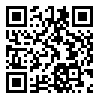دوره 10، شماره 1 - ( 1403 )
جلد 10 شماره 1 : e22 |
برگشت به فهرست نسخه ها
Download citation:
BibTeX | RIS | EndNote | Medlars | ProCite | Reference Manager | RefWorks
Send citation to:



BibTeX | RIS | EndNote | Medlars | ProCite | Reference Manager | RefWorks
Send citation to:
Shahgholi E, Sedighian M, Kajiyazdi M, Koochak Zadeh L, Amirmohseni M. Study on the Factors Influencing the Response to Intravenous Immunoglobulin in Children with Immune Thrombocytopenia Referred to Bahrami Hospital, Iran. CJP 2024; 10 (1)
URL: http://caspianjp.ir/article-1-252-fa.html
URL: http://caspianjp.ir/article-1-252-fa.html
Study on the Factors Influencing the Response to Intravenous Immunoglobulin in Children with Immune Thrombocytopenia Referred to Bahrami Hospital, Iran. مجله کاسپین کودکان. 1403; 10 (1)
چکیده: (414 مشاهده)
Background and Objective: Therapeutic response to intravenous immunoglobulin (IVIG) for the treatment of immune thrombocytopenia (ITP) in children may itself be influenced by various factors. The aim of the present study was to investigate the factors associated with the response rate to IVIG treatment in children with ITP.
Methods: The population of this cross-sectional study included children under the age of 15 who were diagnosed with ITP and admitted to Bahrami Hospital in Tehran from 2021 to 2022. Information on each patient including age, gender, comorbidities, platelet count at diagnosis and duration of treatment at baseline was obtained by reviewing the hospital's data registry. Treatment outcomes, including treatment success and disease recurrence or chronicity, were also recorded. A p- value of 0.05 was considered significant.
Findings: Of the 41 patients examined, 7 (17.1%) cases failed to respond to IVIG treatment and received additional treatment with corticosteroids. There was a significant difference between patients with and without response to IVIG treatment. The mean initial platelet count was 22676.47±18514.07 and 13857.14±7883.07 per cubic millimeter, respectively, indicating a significant difference between the two groups (P value=0.045). An initial platelet count of less than 9,000 was predictive of non-response to IVIG treatment.
Conclusion: In children with ITP, the response rate to IVIG administration was high, with patient gender and initial platelet count influencing the response. Therefore, male gender and a low platelet count on admission are predictive factors for a lower response to treatment in these patients.
Methods: The population of this cross-sectional study included children under the age of 15 who were diagnosed with ITP and admitted to Bahrami Hospital in Tehran from 2021 to 2022. Information on each patient including age, gender, comorbidities, platelet count at diagnosis and duration of treatment at baseline was obtained by reviewing the hospital's data registry. Treatment outcomes, including treatment success and disease recurrence or chronicity, were also recorded. A p- value of 0.05 was considered significant.
Findings: Of the 41 patients examined, 7 (17.1%) cases failed to respond to IVIG treatment and received additional treatment with corticosteroids. There was a significant difference between patients with and without response to IVIG treatment. The mean initial platelet count was 22676.47±18514.07 and 13857.14±7883.07 per cubic millimeter, respectively, indicating a significant difference between the two groups (P value=0.045). An initial platelet count of less than 9,000 was predictive of non-response to IVIG treatment.
Conclusion: In children with ITP, the response rate to IVIG administration was high, with patient gender and initial platelet count influencing the response. Therefore, male gender and a low platelet count on admission are predictive factors for a lower response to treatment in these patients.
| بازنشر اطلاعات | |
 |
این مقاله تحت شرایط Creative Commons Attribution-NonCommercial 4.0 International License قابل بازنشر است. |



